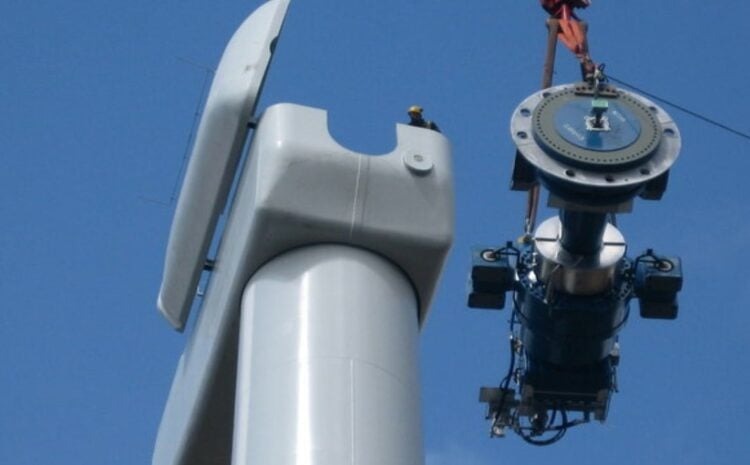Wind turbines are impressive machines that turn the natural movement of air into usable electricity. While most people focus on the large, rotating blades, one of the most critical—and often overlooked—components lies inside the turbine’s nacelle: the gears. These gears play a key role in making wind energy practical and efficient. Understanding how wind turbine gears work, and why they matter, can give you a clearer picture of the technology behind renewable energy.
The Basics of Wind Energy Conversion
At a fundamental level, wind turbines capture the kinetic energy of moving air using their large blades. These blades are connected to a rotor that spins as the wind blows. However, this spinning motion doesn’t occur at a speed high enough to efficiently power a generator. That’s where gears come in. The gearbox increases the rotational speed from the slow-turning rotor to the high-speed input needed by the generator to produce electricity.
What Is a Wind Turbine Gearbox?
A wind turbine gearbox is a precision-engineered mechanical assembly designed to modify the speed and torque from the rotor shaft before it transfers energy to the generator. In conventional wind turbine setups, the rotor spins relatively slowly—usually around 10 to 20 revolutions per minute (RPM)—while the generator requires a much higher input speed, typically between 1,000 and 1,800 RPM, to efficiently produce electricity. The gearbox serves as the critical intermediary that magnifies the rotational speed to match the generator’s operational needs.
Housed within the nacelle—the large enclosure perched atop the turbine tower—the gearbox is strategically positioned between the low-speed rotor shaft and the high-speed generator shaft. Given the demanding nature of this role, many wind turbines rely on custom gear manufacturing to ensure that gearboxes are tailored to specific performance requirements, environmental conditions, and torque loads. These customized gear systems enhance durability, efficiency, and reliability across the turbine’s lifespan.
Types of Gears Used
The gears inside a wind turbine gearbox are not all the same. Several types of gears may be used, depending on the design and power requirements of the turbine:
- Planetary Gears: These are commonly used in wind turbine gearboxes due to their compact size and ability to handle high torque. They consist of a central gear (sun), surrounding gears (planets), and an outer ring gear.
- Helical Gears: These gears are quieter and more efficient than straight-cut gears, thanks to the angled teeth that provide smooth engagement.
- Spur Gears: These are simpler and less expensive but not as smooth or quiet as helical gears.
Many gearboxes use a combination of planetary and helical gears to achieve the right balance of torque, efficiency, and durability.
Why Wind Turbine Gears Matter
1. Power Efficiency
Without the gearbox, the generator wouldn’t spin fast enough to generate electricity efficiently. The gear system is what makes modern wind turbines viable for large-scale power production.
2. Structural Balance
Gears help balance the load between the rotor and generator. By converting the torque and speed, they allow the system to operate smoothly under changing wind conditions.
3. Durability and Longevity
Wind turbines often operate in harsh environments—offshore, in mountains, or wide open plains. High-quality gear systems are essential for minimizing wear, reducing maintenance, and extending the turbine’s service life.
4. Economic Impact
Downtime from gearbox failures can be extremely costly. Repairs and replacements are expensive and may require cranes and specialized labor. A well-designed gear system minimizes operational interruptions and protects the bottom line for energy providers.
Common Challenges with Gear Systems
Gearboxes in wind turbines face several operational challenges:
- High Loads and Stress: Wind speeds are unpredictable, and gusts can suddenly increase the force on the turbine blades. Gears must withstand these varying loads without damage.
- Heat and Friction: Gears generate heat from friction, especially at high speeds. Proper lubrication is essential to prevent wear and overheating.
- Noise and Vibration: Poorly maintained or misaligned gears can cause excessive noise and vibration, leading to damage over time.
To combat these issues, manufacturers incorporate advanced materials, precision engineering, and continuous monitoring systems in modern gearboxes.
The Future: Gearless Alternatives?
Some newer wind turbine designs use direct-drive technology, which eliminates the gearbox entirely. Instead of converting speed, the generator is built to rotate slowly, in sync with the rotor. While this approach reduces mechanical complexity, it comes with trade-offs such as increased generator size and cost.
Still, traditional geared systems remain dominant in the wind energy market due to their efficiency, proven reliability, and ease of integration with existing turbine designs.
In Conclusion
Wind turbine gears may be hidden from sight, but their role is absolutely critical. They transform the slow, steady rotation of turbine blades into the high-speed motion required to generate electricity. By improving efficiency, supporting structural loads, and reducing maintenance needs, these mechanical components help wind energy remain a competitive and sustainable power source. As technology continues to evolve, gear systems will remain at the heart of the wind energy revolution—quietly doing the heavy lifting to keep the blades turning and the lights on.




